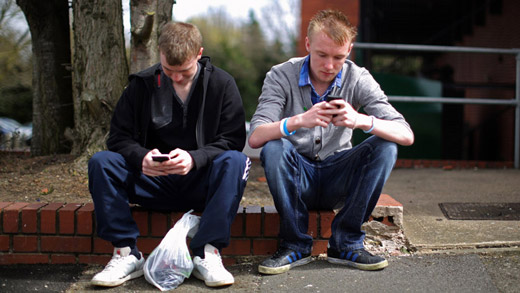A recent International Labour Organization (ILO) study found that lack of higher (post-secondary) education in developing countries leads to poor labor market outcomes for young people, meaning that they have a much lower chance of finding a decent job, or they have to settle for vulnerable or informal employment. The study highlighted that completing secondary education isn’t enough, and pushing undereducated and under-skilled youth into the labor market doesn’t help either.
The study was part of the Work4Youth project, a “five-year partnership between the ILO Youth Employment Programme and The MasterCard Foundation that aims to promote decent work opportunities for young men and women through knowledge and action.” The study’s findings, while perhaps not completely surprising, are just the tip of the iceberg when it comes to the wider picture regarding youth employment. It’s not a good one.
According to ILO figures, the global youth (aged 15-24) unemployment rate is increasing. In 2013 it was three times as high as the adult unemployment rate. The actual number is staggering. There were over 37 million fewer young people in employment in 2013 than there were in 2007. That’s a lot more unemployed young people. Many looking for work, although some have probably given up. That’s tough.
Youth unemployment rates in the US mimic this picture. Despite a booming US economy and the jobless rate at its lowest since 2008, youth unemployment is rising. Youth unemployment rates for the 20-24 year age group tend to run about double that of the general population, and more than triple for the 16-19 year age group.
Part of the problem is that the jobs that are available to young Americans are a mismatch with the skills young people have or their level of educational attainment. One of the impacts of this is that not only are youth unemployed, but they’re underemployed; often working in jobs with too few hours and/or working more than one job to make ends meet.
In some of the US’ economic competitors in Europe (e.g. Germany, Switzerland and the Netherlands), youth unemployment is half the US rate or less. A recent CNBC article discussed what they do differently. The crux of it is skill-building and relevant work experience. Preparing young people for working life. It may seem simple, but it’s really only just starting to catch on in the US and it needs to scale-up.
NYC’s Urban Youth Jobs Program is a fantastic example of how the government can assist. The program encourages businesses to hire unemployed, disadvantaged youth (ages 16-24) in certain areas, as well as making it easier for youth to find a job and by offering a career training path for youth.
Today’s youth are the future of business, so businesses also have a key role to play. The most crippling effect of unemployment is the loss of self-esteem. Businesses can create self-esteem by creating employment opportunities for young people that offer choices, opportunities and challenges.
Businesses can’t just rely on the system to teach potential applicants relevant skills. They need to recognize that an unfilled role shouldn’t necessarily be seen as a bad thing but perhaps a sign of need; a gap to fill in terms of providing on-the-job training and upskilling, or by providing a mentor in the workplace. Businesses will reap the benefits in the long-term. Young people bring energy and enthusiasm. And we could all use more of that.






